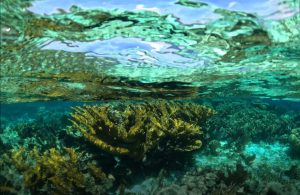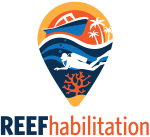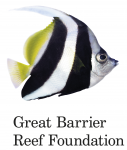Diversifying Livelihoods
Understanding the Local Tourism Sector and Identifying Opportunities for Diversifying Livelihoods
The pause on tourism caused by the COVID-19 pandemic has decimated the industry in most locations around the world. While government support and domestic tourism has softened the blow in some locations, the revival of the tourism sector is imperative for the economic recovery of some communities. However, with this tourism pause, there is also opportunity to address the issue of reliance on reef tourism for people’s livelihoods and security, and to explore other potential income revenues at sites that simultaneously support conservation. By doing this, a more resilient tourism economy can be built post COVID-19 pandemic that is better prepared to deal with environmental, societal, political, health-related, technological, or economic crises in the future. “If the system is resilient, it is implicit that it has the ability not only to overcome crises and disasters but to better adapt to change overall” (Prayag 2018).
The 2021 Solution Exchange examined several case studies from around the world and opportunities for diversifying livelihoods at Resilient Reefs Initiative sites.
Key Takeaways
- Policy makers should consider opportunities to improve access to tourism jobs and businesses for First Nations communities, who bring an essential perspective but who face a range of barriers to entry such as the cost of insurance or assets.
- COVID-19 created enabling conditions for local entrepreneurs. It was an incredible natural experiment in unlocking local entrepreneurship in some regions, from a shift to regenerative agriculture in Bali to burgeoning micro-industries developing natural products in Belize.
- “Communities need a hand up not a hand-out”. Core components of community tourism include operations that are owned, led, and run by communities themselves. This empowers communities, bringing income to individuals and families (instead of large corporations), and increases capacity and develops new skills.
- Create opportunities that reduce or remove pressure on natural resources. Rather than just shifting from one kind of reef tourism to another kind of reef tourism—those livelihoods are both dependent on the same natural resource and therefore equally vulnerable to the same kinds of shocks—efforts should be made to develop new livelihood and income opportunities that are truly independent from reef assets and more sustainable.
- Focus on tourism activities that have minimal impact to the environment and high value to the user. It may not be possible to completely shift away from a dependence on reefs for livelihoods. One potential way to reduce pressure on the system is to analyze the impact and profitability of different reef tourism activities with a focus on low impact, high value options. Adding value to a tourist experience that takes pressure off the reef is another option.
- Public and private sector partnerships are critical. They can help assess, identify, and drive new opportunities for innovation in diversifying livelihood options.
Spotlight on Belize
How can we diversify local livelihoods and reduce pressures on natural resources?

Photo © Marcus Alamina
The Belize Barrier Reef, which gained UNESCO World Heritage listing in 1996, is 300 km long and is part of a 900 km long system known as the Mesoamerican Barrier Reef System. Its coral reefs and mangroves have been valued at US$150-$190 million per year in tourism, US$14-$16 million per year in fisheries and US$231-$347 million per year in shoreline protection benefits (Cooper et al. 2008).
Belize stakeholders would like to create opportunities that remove pressure on natural resources. COVID-19 decimated the tourism industry in Belize, initially rendering the national economic activity at a standstill, highlighting the need for income diversification efforts. Many who relied on income from tourism returned to subsistence fishing. The pause in tourism has also unlocked local entrepreneurship especially among local women. The creation of Belize-based products has given birth to a new wave of small businesses and the utilization of online platforms to supplement income generation.
Additionally, reef managers of the Belize Barrier Reef System have recognized this pause in tourism as an opportunity to redefine sustainable tourism standards as well as reevaluate carrying capacities of heavily visited marine areas.
Presentations
Watch the presentations by Solution Exchange experts in English or French to learn more:
Une agriculture qui se renouvelle: de nouvelles opportunités touristiques – Stephen Box, Marine Ecologist
Des communautés plus fortes grâce au tourisme – Jamie Sweeting, Planeterra
Trouver des moyens d'aider les entreprises des populations autochtones à prospérer – Henrietta Marrie, Aboriginal Australian Leader
Advancing Sustainable Tourism Strategies
The Solution Exchange was intended to inspire thinking, bring together the Resilient Reefs Initiative managers and partners for knowledge exchange and learning, and help catalyze action on the ground. While no specific next steps for diversification of livelihoods were outlined, a more encompassing approach to develop a sustainable tourism framework was discussed. Identified next step:
Develop a sustainable tourism strategy framework for reef communities.
The Solution Exchange explored various components of sustainable tourism strategies—providing examples of a range of different tools and techniques. A potential next step is to integrate these components and develop a sustainable tourism strategy framework for reef communities, something that does not currently exist. Further consultation with sites and partners is required to better understand both the demand and target audience for this kind of framework.
Tourism-based Coral Reef Restoration
 The Nature Conservancy’s Caribbean Division, in partnership with the Booking Cares Fund, has developed the REEFHabilitation experience to promote successful coral reef restoration through sustainable tourism. The REEFhabilitation experience provides a hands-on learning adventure for tourists to actively participate in coral restoration, and is being piloted in the Dominican Republic with Fundemar and Grupo Puntacana Foundation. All materials to support this tourism experience are publicly available for others who wish to start sustainable tourism-operated coral reef restoration projects using restoration best practices.
The Nature Conservancy’s Caribbean Division, in partnership with the Booking Cares Fund, has developed the REEFHabilitation experience to promote successful coral reef restoration through sustainable tourism. The REEFhabilitation experience provides a hands-on learning adventure for tourists to actively participate in coral restoration, and is being piloted in the Dominican Republic with Fundemar and Grupo Puntacana Foundation. All materials to support this tourism experience are publicly available for others who wish to start sustainable tourism-operated coral reef restoration projects using restoration best practices.
REEFHabilitation Experience Instructional Guide in English and Spanish
REEFHabilitation Brochure
Video in English, Spanish, and Italian
Tourism Underwater Datasheets for Nursery, Outplanting, and Restoration monitoring
 This content was developed in collaboration
This content was developed in collaborationwith Great Barrier Reef Foundation.
Resources
OECD Rebuilding Tourism for the Future: COVID-19 Policy Responses and Recovery
Reconstruire le Tourisme de Demain: Réponses des Pouvoirs Publics au COVID-19 et Reprise
Innovation-driven Growth in Regions: The Role of Smart Specialisation
In Galápagos, Novel Conservation Approach Finds ‘Sweet Spot’ Between Production, Protection
